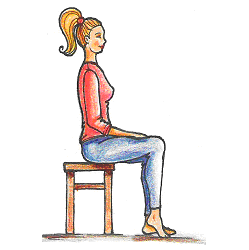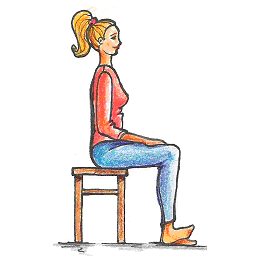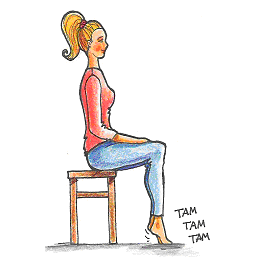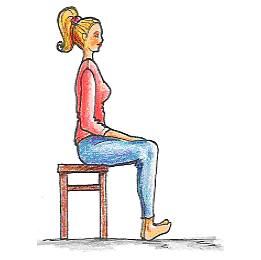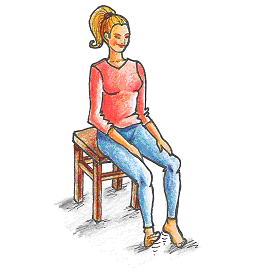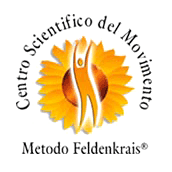Breathing
This lesson improves the capacity of the respiratory system. The increased vitality that will be obtained from a wide and regular breathing will affect the oxygenation processes, the general metabolism and the improvement of the personality.

1- Lie down with legs bent and feet on the floor. Close your eyes and breathe slowly. Feel the air entering the nostrils passing over the palate, into the trachea, into the upper bronchus, into the upper lobe of the right lung making it extend in various directions: towards the sternum, the collarbone, the ear and down towards the floor below the armpit and shoulder blade. Mentally visualize all these details as you breathe slowly with short breaths by making many movements in the chest, abdomen as you inhale and exhale.

2- Now, with each breath, follow the path of the air through the respiratory shaft to the upper and lower lobe. Imagine that the upper lobe of the right lung extends upwards and at the same time the lower lobe is stretched downwards in order to increase the distance between the pelvis and armpit. Repeat the entire cycle until the process becomes regular, continuous and familiar. So initially feel the right lobe widening and lengthening up and down as you inhale. When you exhale, instead, think of the contraction of the lung, and of the right lobe that makes the air return back from the extremity of the shoulder, along the scapula, thorax, bronchi coming out of the nostrils. Observe how the lung recedes from the diaphragm and ribs spreading the air like a sponge. With your legs stretched out, feel if there is a difference between the two sides.

3- On the left side, with bent legs, try to feel the passage of air from the nostrils to the palate and into the central trunk by expanding the middle lobe. Think of the internal parts of the lung that cause the flank to widen up, down, back and forth, being absorbed by the chest in all directions.
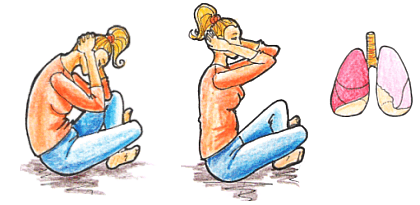
4- Sitting on the ground with legs crossed, eyes closed, head bent forward with hands crossed behind the neck, elbows let hang freely between the knees, breathe. If in this position you may find it difficult and discover the point where the spine is not flexible, the lung is not breathing. Think of the passage of air that through the nostrils reaches the trachea, the bronchi; observe the enlargement of the right lung, from the scapula to the middle bronchus, to the liver and notice in which points the lung glides more freely. When you have identified these points the lung will slide more freely. Get up and walk, see if there is a difference between the two sides.
